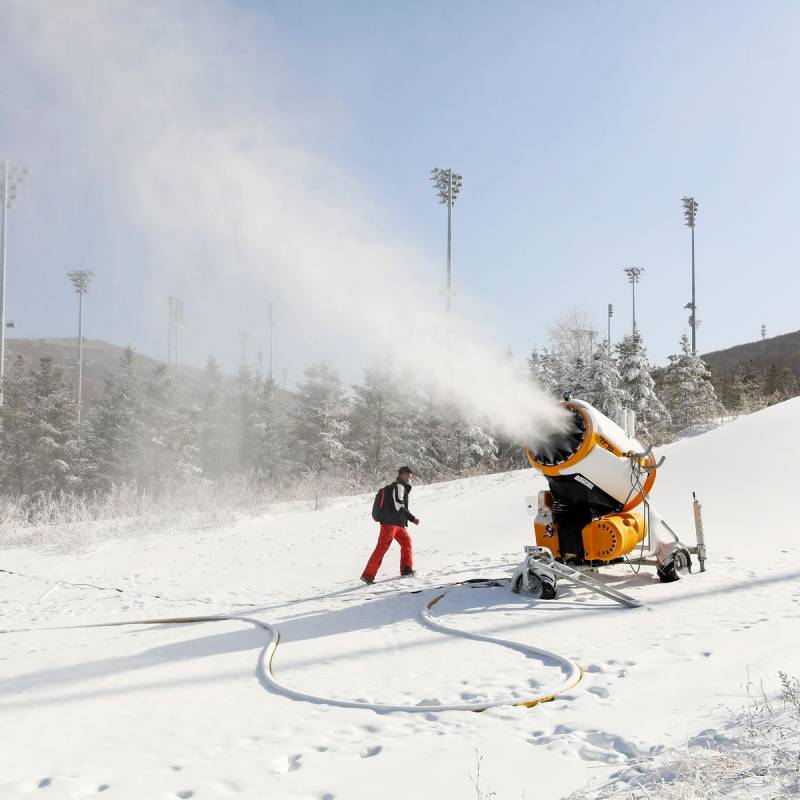A hot dry wind blasted across the slopes of Innsbruck, Austria, for seven weeks in the winter of 1964, melting the snow ahead of the Winter Olympics.
Austrian soldiers brought 20,000 cubic meters (700,000 cubic feet) of ice blocks and 20,000 cubic meters (1.4 million cubic feet) of snow to the location, hand-packing it into the slopes to save the games (link in French).
At 1980, however, snow machines spraying droplets of water into the air to freeze defeated the terrible skiing conditions brought on by a dry winter in Lake Placid, New York. Those Olympics were the first to use artificial snow, which was developed in the 1930s on a Hollywood set.
What the synthetic snow lacked in aesthetics (these are formed by naturally occurring atmospheric water vapor, whereas the sprayed water from snow guns freezes into tiny balls), it made up for in dependability. Some skiers like synthetic snow because it melts slower and packs similarly to real snow.
Due to uncooperative weather in recent years, snow cannons have been blasting out ever-larger amounts of fake snow. As the host city in 2010, Vancouver converted 7960 cubic meters (2.1 million gallons) of water into snow. In the 2014 Sochi Olympics, 80% of the snow was fake; four years later, 90% of the snow in PyeongChang, South Korea, was fake.
This year's Winter Olympics will be the first to be held entirely on manufactured snow, on the hills outside of Beijing.
Zhangjiakou, 100 kilometers from Beijing, has a cold yet dry climate. Each winter has averaged only 7.9 mm of precipitation during the last four decades. China's bid for the Winter Olympics has always been dependent on a massive snow machine army.
China's bid predicted that snow-making the Olympic slopes would require 49 million gallons of water. However, according to a geographer contacted by Bloomberg, the country might divert up to 2 million cubic meters (528 million gallons) of water to snow-making, putting even more strain on one of the country's most water-stressed regions.
In mid-November, the alpine ski facility, one of three venues for the games, started creating the requisite 1.2 million cubic meters of snow. It takes about half a cubic meter of water to make one cubic meter of snow.
In a 2015 report (pdf) evaluating China's bid for the Olympics, the International Olympic Committee stated that Beijing "underestimated the amount of water that would be required for snowmaking for the Games" and "overestimated the ability to recapture water used for snowmaking."




